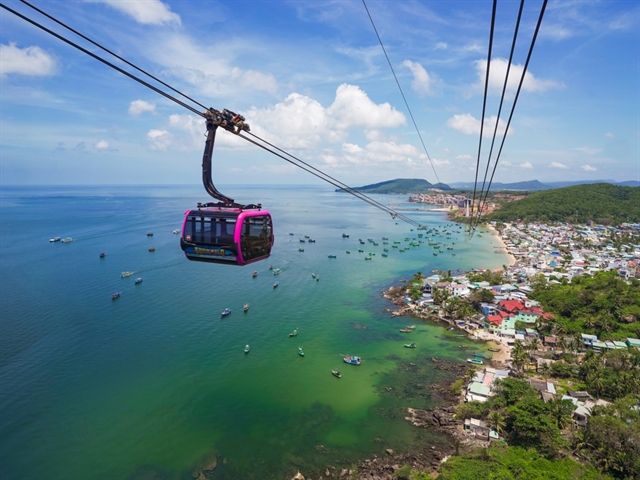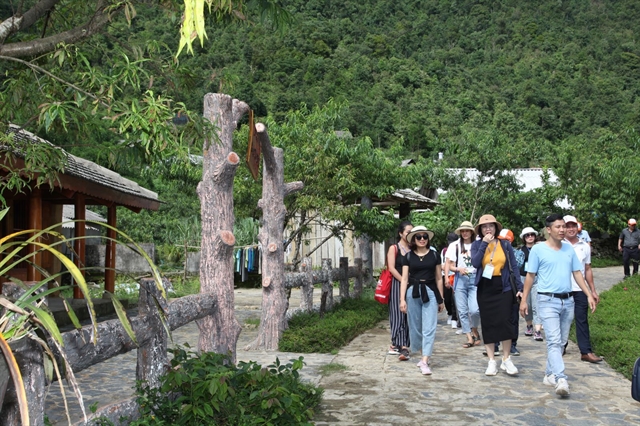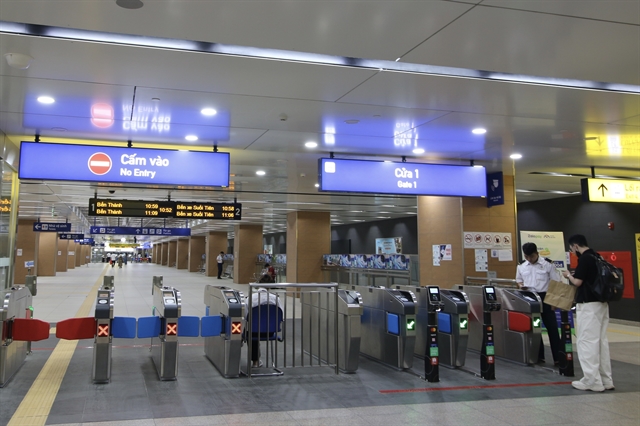 Inner Sanctum
Inner Sanctum

The people play a central role in the development of community-based tourism, and the local government also has a vital role. Bảo Khánh talks with the Chairman of the Việt Nam Community–based Tourism Association (VCTC) Phạm Hải Quỳnh about his views on sustainable tourism development
The people play a central role in the development of community-based tourism, and the local government also has a vital role. Bảo Khánh talks with the Chairman of the Việt Nam Community–based Tourism Association (VCTC) Phạm Hải Quỳnh about his views on sustainable tourism development.

|
| Phạm Hải Quỳnh, chairman of the Việt Nam Community–based Tourism Association. Photo quangninh.gov.vn |
Inner Sanctum: How do you evaluate community-based tourism's role and development trend in Việt Nam?
Community-based tourism contributes to bringing socio-economic efficiency to many localities and businesses and improving the lives of farmers. In addition, the sense of building a cultural environment, and a civilised and clean landscape has also been raised, actively contributing to preserving national cultural identity, while creating a difference to attract tourists.
Several innovative community-based tourism models have been launched recently, promoting their effectiveness in creating livelihoods associated with preserving traditional culture and protecting the environment.
Many localities have formed agricultural models related to rural tourism and community-based tourism thanks to diverse ecosystems, traditional craft villages and specific cultural identities to bring positive effects.
However, up to now, the tourism industry has not had specific standards and detailed instructions in the development of community-based tourism. Many provinces and cities are currently massively developing the homestay service and think it is community tourism. But the nature of community-based tourism is to associate tourism with people to jointly exploit and do business.
It is necessary to pay attention to local cultural values and natural landscapes to choose and exploit strengths properly. With the community still retaining indigenous cultural values, it is necessary to use them more deeply to create unique tourism products. Along with that is the value of natural landscapes, and convenient transportation connecting regions to build products and bring benefits to the local community.
Inner Sanctum: What is the biggest difficulty in developing community-based tourism?
Community-based tourism must start with the community, and the difficulty is how to develop that community sustainably. It is necessary to proceed step by step, survey the points to build community tourism and find outstanding values. Accompanying this is the problem of transport connectivity, the desire to develop community-based tourism of local authorities and people to ensure their livelihoods.
In developing community-based tourism, conflicts of interest may arise between communities or between households participating in and not participating in tourism. If this conflict is not resolved, the cohesion and common values of the community will be broken, not bringing common benefits.
In fact, this has happened because we do not have a common standard for community tourism development.
Another difficulty is to find the right identity to build a different tourism product, thereby attracting international tourists and high-spending customers. However, at present, localities that want to develop community-based tourism all let people learn from the experiences of other localities, but they only apply according to what they see and hear without deeply understanding how to exploit their own unique values to make a difference to other communities. This leads to the duplication of community tourism products in many places.

|
| Tourists visit the Sì Thầu Chải community-based tourism village in Hồ Thầu Commune, Tam Đường District, Lai Châu Province. Photo vietnamtourism.gov.vn |
Inner Sanctum: How do you evaluate the role of the locality in the development of community tourism?
Local authorities have a vital role in promoting, directly monitoring, and connecting with experts and travel businesses to support people in developing community-based tourism. Many projects of NGOs have invested in and supported tourism development communities.
However, without the accompanying of local authorities and the support of experts, projects will find it challenging to achieve the desired results. The role of commune officials is also very important because they are the people closest to the locals to help the community develop, promptly monitor, and deal with conflicts.
However, at present, many localities develop community-based tourism in a way that wastes resources, efforts and state money. The people get nothing, the community can't develop, and the guests don't come. In some localities, when the projects ended and the experts withdrew, the community could not continue to develop the community-based tourism model.
On the contrary, many localities have an inquiring nature, and the VCTC is always ready to support them. The VCTC is willing to work for free and spend more resources to support people in the best way because those are the communities that really want to develop tourism. That is the value of giving and receiving and the association's responsibility to the community. Bringing smiles to people and values to the community is the meaning of life.
Inner Sanctum: How has the VCTC supported localities to develop community-based tourism, and what are its future plans?
Determining that community-based tourism plays an important role in developing tourism as a spearhead for the economic sector, the VCTC is continuing to support localities with a clear direction, assessment and value analysis of each community, advising and supporting the construction of standard tourism communities, bringing value to the community and creating many new tourism products.
With the criterion of "Connecting - Accompanying - Developing", the VCTC has connected domestic tourism businesses to exploit and support community tourism products while spreading the development of community tourism and enhancing livelihoods.
In addition, the VCTC actively cooperates with many foreign projects, such as the Green Trường Sơn Project of the United States Agency for International Development from May 2018 to December 2019 to support the construction, training and develop new community eco-tourism villages such as Ta Lang in Tây Giang District, Quảng Nam Province, and A Nor in A Lưới District, Thừa Thiên Huế Province.
By the beginning of 2022, the VCTC has cooperated with Helvetas to survey 20 tourism villages in the provinces of Quảng Bình, Quảng Trị, Quảng Nam, Thừa Thiên Huế and Lâm Đồng to choose two to three destinations in each province and cities to guide the development of the community. Along with that, the project also supports the development of software for training, marketing and completing products, helping people have a better view of community tourism development.
The VCTC is always ready to support localities with potential and needs to develop community-based tourism with the desire to preserve the cultural values and natural landscapes of the localities. Not only ethnic minorities but also Kinh majority people can develop community-based tourism, but it must ensure that the community is included in tourism development and benefits are enjoyed by the community.
At present, the VCTC is proposing to the Tourism Development Fund of the Ministry of Culture, Sports and Tourism to survey and support communities, especially those accompanying the local government. VNS


.jpeg)

